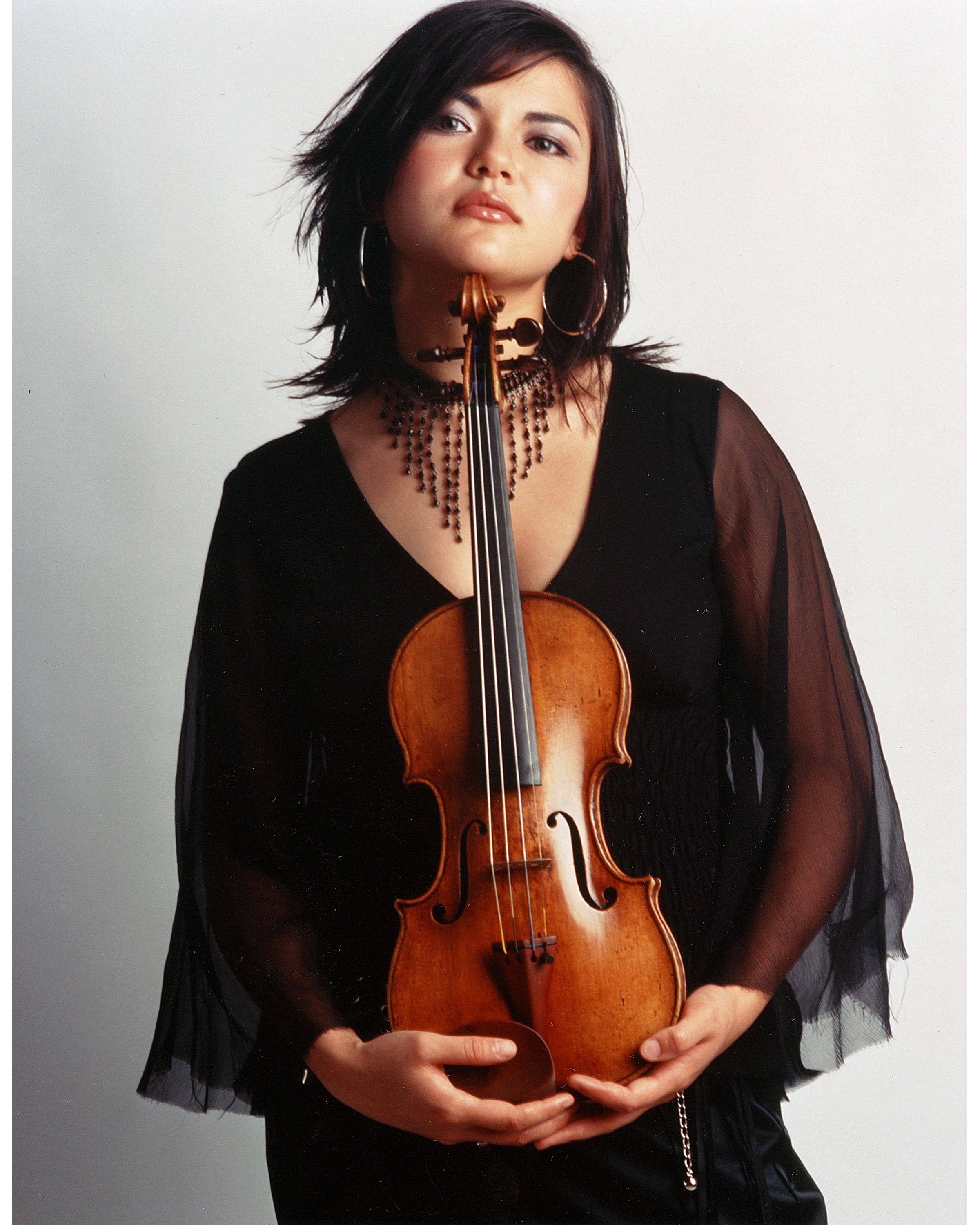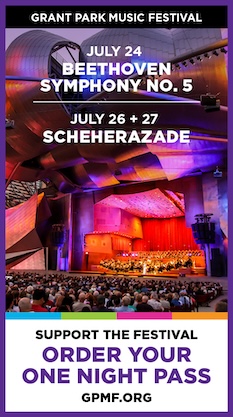Violinist strikes sparks with belated Shostakovich premiere at Grant Park

For all of the Grant Park Music Festival’s enterprising programming, it’s surprising to learn of significant works that have been overlooked. Friday night’s program led by Ukrainian conductor Kirill Karabits offered three festival premieres—one of which, surprisingly, was Shostakovich’s Violin Concerto No. 1.
Shostakovich wrote the work for David Oistrakh in 1948, yet was wary of provoking further censure for “formalist” tendencies with such personal, non-heroic music. The composer put the concerto in his drawer—along with the Fourth and Fifth Quartets and the Songs on Jewish Folk Poetry—where it stayed for seven years. Oistrakh finally gave the work its premiere in 1955 after Stalin’s death.
The finest violin concerto of the 20th century, this is an intensely personal work, with many virtuosic challenges for the soloist yet nothing showy or for mere display. Instead, there is a sense of darkly ruminative searching throughout; the heart of the concerto is the extended Passacaglia where the soloist engages in a soliloquy-like interior conversation, slowly moving from bleak rumination to strenuous striving before sinking back into the gloom. In the ensuing cadenza, the sense of an individual struggling against malign exterior forces is unmistakable, with the hard, inexorable conflict exploding into a bravura lightning finale, which for all its thrilling speed and brilliance, conveys a sense of desperation as much as exhilaration, the desolation never quite dispelled.
Karen Gomyo’s timbre is rather slender for this demanding music, yet the Canadian violinist yielded nothing in force or intensity in her performance Friday night at the Pritzker Pavilion. Gomyo brought a laser-like concentration to her playing that made up for the lack of volume, sailing through the technical challenges, with the composer’s DSCH motif given emphatic bite in the Scherzo.
Gomyo rose to the challenge of the final sections impressively, sensitively capturing the ebb and flow of the Passacaglia and charting the evolution from gloomy introspection to fiery exultation with technical gleam and firm conviction. Perhaps the closing Burlesca could have been a bit more unbridled in its virtuosity, but Gomyo handled all the challenges with technique to burn. Karabits was an uncommonly thoughtful partner and, while string textures would have benefited by greater weight, the conductor’s balances ensured that his soloist was always heard.
Even with the Marxist-friendly scenario, Aram Khachaturian’s ballet Spartacus was not a great success at its 1956 Soviet premiere, though that didn’t prevent the Armenian composer from, rather optimistically, creating four suites of excerpts. Substantially revised stagings found increasing popularity, with Spartacus reaching its definitive form with the second Bolshoi production in 1968.
Friday’s program promised all of the Suite No. 1 music with the addition of the Adagio from the Second Suite, but the Spartacus excerpts actually performed seemed truncated and reordered from those listed in the notes.
Just as well since even with its visceral rhythmic excitement, a little of Khachaturian’s loud, aggressively repetitive music can go a long way. Karabits deftly downplayed the unhealthy vulgarity, drawing out the exotic languor and coloring of the score while skirting bombast as much as possible. Maybe I’ve been to too many concerts this week, but the celebrated Adagio of Spartacus and Phrygia—the ballet’s single “hit”—bears an uncanny similarity to Can’t Take My Eyes Off Of You by Franki Valli and The Four Seasons.
The concert began more subtly with Valentin Silvestrov’s Serenade of Parting. Written in 2002 in memory of the Ukrainian composer’s friend Ivan Fedorovich Karabits—father of the conductor—the brief work for strings is characteristic in its mood of thoughtful melancholy. Karabits led a refined rendering of this poignant homage, drawing crystalline purity from the Grant Park strings. Karabits takes the reins of the Bournemouth Symphony Orchestra this fall, and it would be a fine idea to invite this gifted young musician back in a program better suited to showcase his podium abilities.
Posted in Performances

Posted Sep 06, 2009 at 2:27 pm by Mark Prigoff
Not only does Aram Khachaturian’s “Adagio of Spartacus And Phrygia” has a strong resemblance to the Frankie Valli song, “Can’t Take My Eyes Off Of You” in terms of certain sections of the melody and chord structure, it also is quite similar in nature (or melodically) to the song, “Stormy Weather”. So many classical themes have become the foundation for many American or modern popular songs as with such examples:
Franz Lehar’s Dein Ist Mein Ganzes Herz became “My Heart Is Yours Alone” and “You Are My Heart’s Delight”.
Puccini’s “Un bel di” from the opera, Madame Butterfly seems to be the basis for the Andrew Lloyd Webber’s song, “Memory” from CATS.
Chopin’s nocturnes and etudes have become the foundation for popular songs for Barry Manilow, A.C. Jobim (“How Insensitive”) and others.
Baubles, Bangles and Beads is distinctly based on the Polivetsian Dances by A. Borodin, just as “Full Moon and Empty Arms” is a popularization of another classical theme.
Bach’s Prelude #1 in C dove-tails perfectly with Barbra Streisand’s “Evergreen”.
And then some of these pop songs “give birth” to others, such as: Harlen’s “Over The Rainbow” quickly becomes Billy Joel’s “Just The Way You Are”. But no wonder! Wasn’t Billy Joel heavily influenced by classical music to begin with?
And many of John William’s film themes have come from his extensive classical background.
For this reason, since you cannot copyright a chord progression in the music business, the chances are great that something that has been classically composed will eventually turn up again in pop music tunes. “What goes around, comes around, and the music comes out here.” And if you are well-trained as a popular composer or musician, you probably listened to and studied much of the classics, or, at the very least, you should.